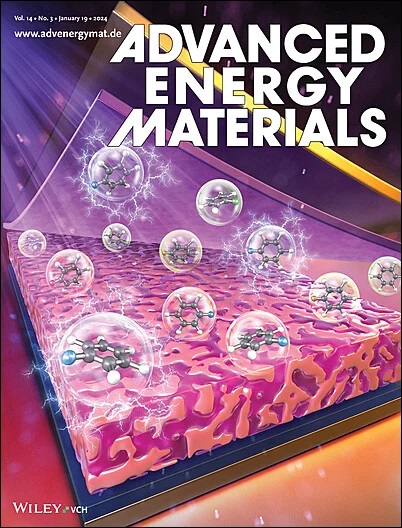Toward Advanced Fuel Electrodes for High-Performance Proton-Conducting Ceramic Cells
IF 24.4
1区 材料科学
Q1 CHEMISTRY, PHYSICAL
引用次数: 0
Abstract
Proton-conducting ceramic cells (PCCs), which include proton-conducting ceramic fuel cells (PCFCs) and proton-conducting ceramic electrolysis cells (PCECs), have attracted significant attention as high-efficiency and eco-friendly technologies for energy conversion. As compared with the impressive progress made in air electrode and electrolyte materials, fuel electrodes have received much less attention due to the faster reaction kinetics and lower polarization. Nevertheless, the design and optimization of fuel electrodes is also critical toward further electrochemical performance improvement, especially when the fuel is extended from hydrogen to ammonia and hydrocarbons for PCFCs. Herein, the recent research progress on the design strategies for fuel electrodes of PCCs is overviewed, including impregnation strategy, exsolution strategy, addition of catalytic layers, and optimization of electrode structure. Finally, perspectives on the challenges facing the development of advanced PCCs fuel electrodes are presented.

求助全文
约1分钟内获得全文
求助全文
来源期刊

Advanced Energy Materials
CHEMISTRY, PHYSICAL-ENERGY & FUELS
CiteScore
41.90
自引率
4.00%
发文量
889
审稿时长
1.4 months
期刊介绍:
Established in 2011, Advanced Energy Materials is an international, interdisciplinary, English-language journal that focuses on materials used in energy harvesting, conversion, and storage. It is regarded as a top-quality journal alongside Advanced Materials, Advanced Functional Materials, and Small.
With a 2022 Impact Factor of 27.8, Advanced Energy Materials is considered a prime source for the best energy-related research. The journal covers a wide range of topics in energy-related research, including organic and inorganic photovoltaics, batteries and supercapacitors, fuel cells, hydrogen generation and storage, thermoelectrics, water splitting and photocatalysis, solar fuels and thermosolar power, magnetocalorics, and piezoelectronics.
The readership of Advanced Energy Materials includes materials scientists, chemists, physicists, and engineers in both academia and industry. The journal is indexed in various databases and collections, such as Advanced Technologies & Aerospace Database, FIZ Karlsruhe, INSPEC (IET), Science Citation Index Expanded, Technology Collection, and Web of Science, among others.
 求助内容:
求助内容: 应助结果提醒方式:
应助结果提醒方式:


